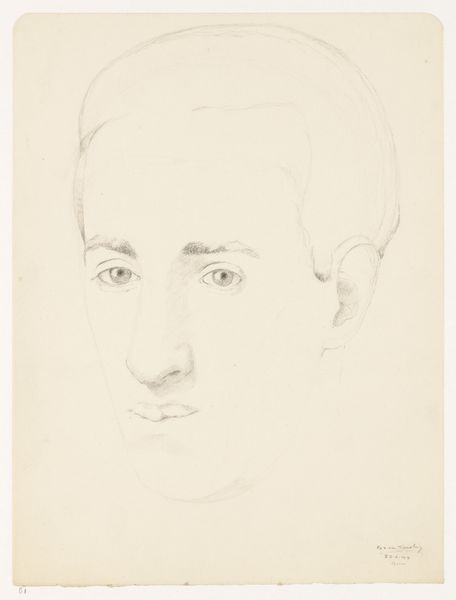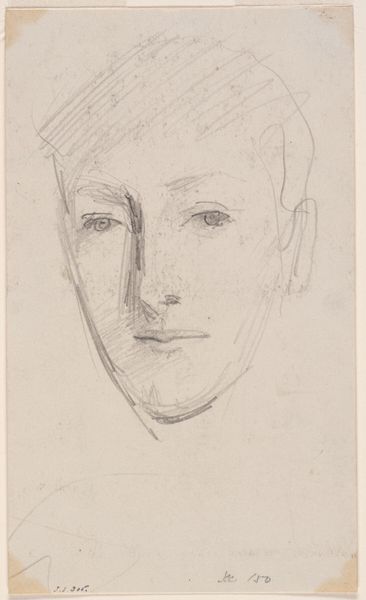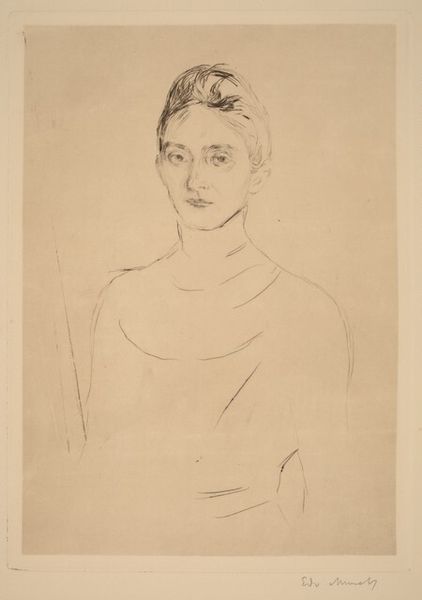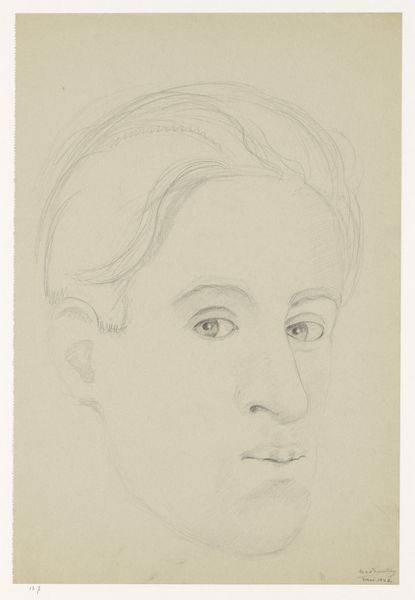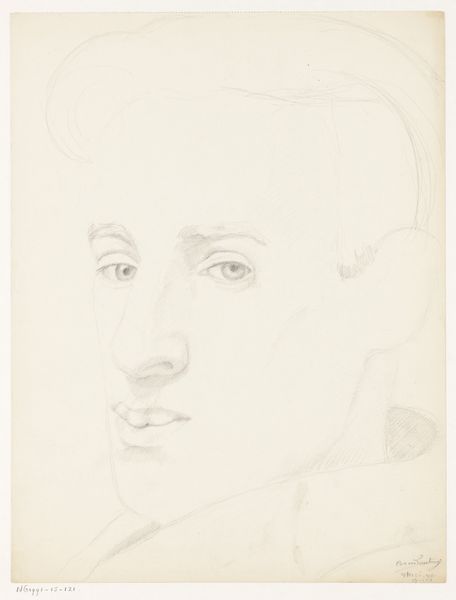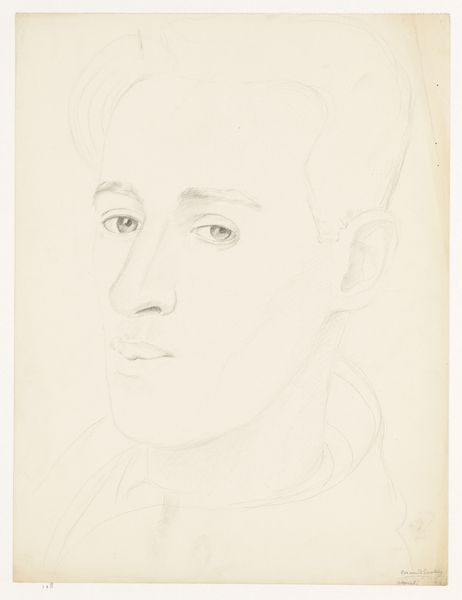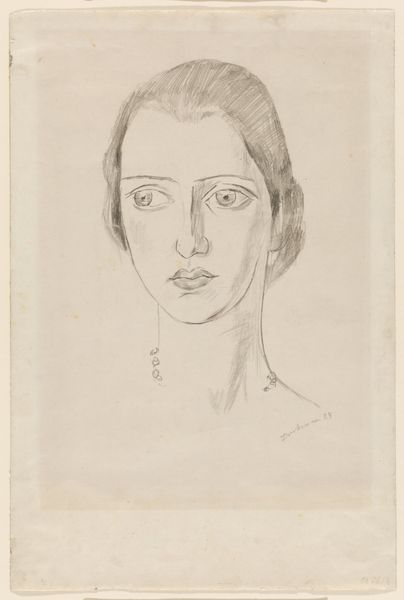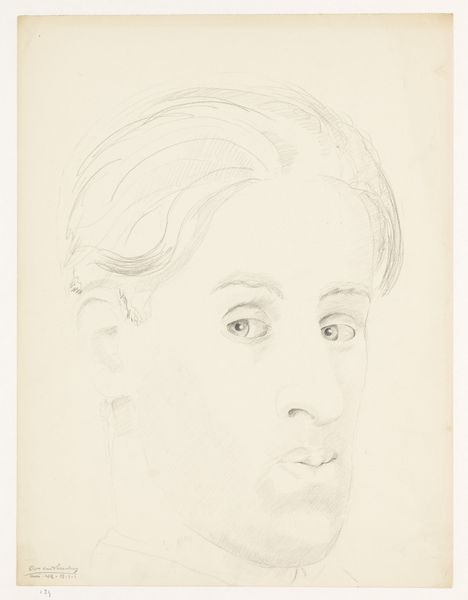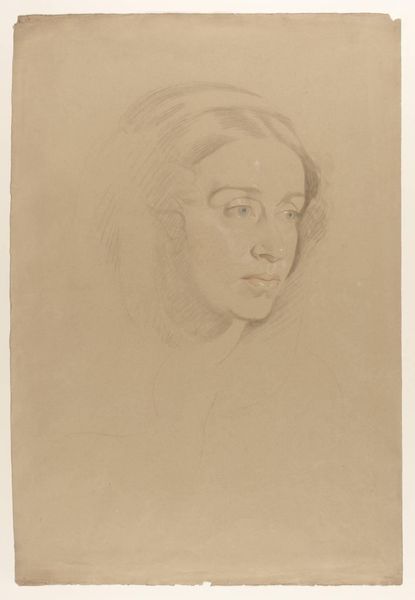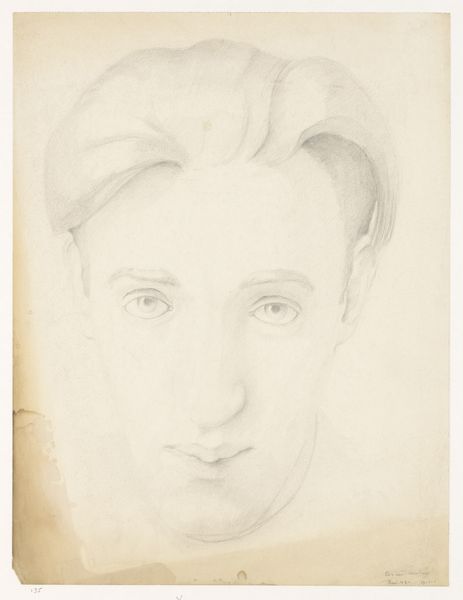
drawing, charcoal
#
portrait
#
drawing
#
charcoal drawing
#
figuration
#
portrait drawing
#
charcoal
#
academic-art
Dimensions: overall: 42.8 x 33.7 cm (16 7/8 x 13 1/4 in.)
Copyright: National Gallery of Art: CC0 1.0
Curator: Pavel Tchelitchew's charcoal drawing, "Mrs. Oliver Jennings," created around 1937, offers a compelling study in portraiture. Editor: The starkness is immediately striking, wouldn’t you agree? The severe angle and limited palette—it all conveys such a reserved elegance, even a touch of melancholy. Curator: I would posit that this reserved quality emanates from the artist’s handling of light and shadow. See how the light catches the high planes of her face, illuminating her brow and cheekbones, while leaving the other sections obscured? This juxtaposition yields a strong sense of structure, creating a visual rhythm, directing our gaze along certain defined paths. Editor: And that deliberate composition begs the question: what social role did portraits play during that era, particularly those of women? Wealthy women had the luxury of image creation. The portraits were a testament to their status, displayed for posterity. Think about the statement made by controlling your own image. Curator: The very execution—the artist’s evident skill with the medium—underscores this position. Charcoal lends itself to gradations, from velvety blacks to wispy greys, but see the lines he uses. The thin marks denote details like her wispy hair and suggest delicacy and refine detail rather than harsh angular lines. Note also, the neck extending downwards is barely visible which adds a further sense of detachment. Editor: It also begs questions about identity and self-fashioning during the interwar period. How were notions of femininity and class being expressed or challenged? And of course, what relationship did the artist have with the subject. These private commissions, or gifts as some might call it, is interesting. The elite is very interlinked and can afford private things and art as display. Curator: Indeed. Viewed formally, we can read a study in contrasts, but it's also an important record from an age preoccupied with its appearance. It certainly causes reflection beyond what simply appears at face value. Editor: An engaging work that raises as many questions as it answers, it certainly contributes greatly to portraiture discourse of that age.
Comments
No comments
Be the first to comment and join the conversation on the ultimate creative platform.
